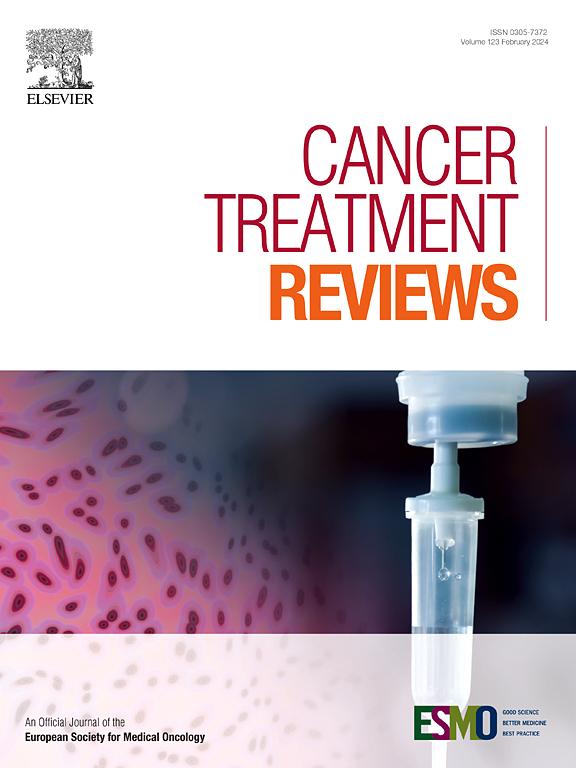Pharmacology and pharmacokinetics of antibody-drug conjugates, where do we stand?
IF 9.6
1区 医学
Q1 ONCOLOGY
引用次数: 0
Abstract
Antibody-drug conjugates (ADCs) are a rising therapeutic class in oncology and hematology, with eleven drugs approved by the US Food and Drug Administration as of January 2025. These “magic bullets” have a complex structure, including a monoclonal antibody, a linker, attachment sites, and a payload usually disrupting microtubules, targeting DNA, or inhibiting topoisomerase 1. By targeting specific tumor antigens, they are expected to be exquisitely effective in releasing “supertoxic” payloads inside tumor cells after intracellular trafficking. Additionally, they may exert a bystander effect, wherein the released payloads act on neighboring cells, amplifying their therapeutic impact regardless of target expression. ADCs have been game-changing drugs to treat tumors with once dismal prognoses or with previously considered unactionable targets, such as HER2-low or triple-negative breast cancer. To what extent there is room for personalized medicine to improve the toxicity/efficacy ratio remains unknown. However, there are inherent issues related to the complexity of the pharmacokinetics of ADCs and their assessments: efficacy or toxicity may be influenced by the clearance of the intact ADC, the circulating payload, or the payload-linker complex. Deciphering these multifaceted exposure-outcomes relationships for both efficacy and safety endpoints, is critical for advancing precision medicine and enabling personalized dosing strategies. To improve future developments and broaden their therapeutic scope, several strategies can be developed, including developing adequate combinations with other treatment classes (cytotoxic agents, immune-checkpoint inhibitors, oral molecular-targeted therapies). In this review, we will discuss the PK/PD aspects of ADCs and their dosing to improve their use in current and future indications.
抗体-药物偶联物的药理学和药代动力学研究进展如何?
抗体-药物偶联物(adc)是肿瘤学和血液学领域一个新兴的治疗类别,截至2025年1月,美国食品和药物管理局批准了11种药物。这些“灵丹妙药”具有复杂的结构,包括单克隆抗体、连接体、附着位点和通常破坏微管、靶向DNA或抑制拓扑异构酶1的有效载荷。通过靶向特定的肿瘤抗原,它们有望在细胞内运输后在肿瘤细胞内释放“超毒性”有效载荷。此外,它们可能发挥旁观者效应,其中释放的有效载荷作用于邻近细胞,放大其治疗效果,而不管目标表达如何。adc已经成为一种改变游戏规则的药物,用于治疗曾经预后不佳或以前被认为无法治疗的肿瘤,如her2低或三阴性乳腺癌。个性化医疗在多大程度上有提高毒性/功效比的空间仍然未知。然而,ADC的药代动力学及其评估的复杂性存在固有问题:有效性或毒性可能受到完整ADC、循环有效载荷或有效载荷连接复合物清除的影响。破解这些疗效和安全性终点的多方面暴露-结果关系,对于推进精准医疗和实现个性化给药策略至关重要。为了改善未来的发展并扩大其治疗范围,可以开发几种策略,包括与其他治疗类别(细胞毒性药物,免疫检查点抑制剂,口服分子靶向治疗)开发适当的组合。在这篇综述中,我们将讨论adc的PK/PD方面及其剂量,以改善其在当前和未来适应症中的应用。
本文章由计算机程序翻译,如有差异,请以英文原文为准。
求助全文
约1分钟内获得全文
求助全文
来源期刊

Cancer treatment reviews
医学-肿瘤学
CiteScore
21.40
自引率
0.80%
发文量
109
审稿时长
13 days
期刊介绍:
Cancer Treatment Reviews
Journal Overview:
International journal focused on developments in cancer treatment research
Publishes state-of-the-art, authoritative reviews to keep clinicians and researchers informed
Regular Sections in Each Issue:
Comments on Controversy
Tumor Reviews
Anti-tumor Treatments
New Drugs
Complications of Treatment
General and Supportive Care
Laboratory/Clinic Interface
Submission and Editorial System:
Online submission and editorial system for Cancer Treatment Reviews
 求助内容:
求助内容: 应助结果提醒方式:
应助结果提醒方式:


